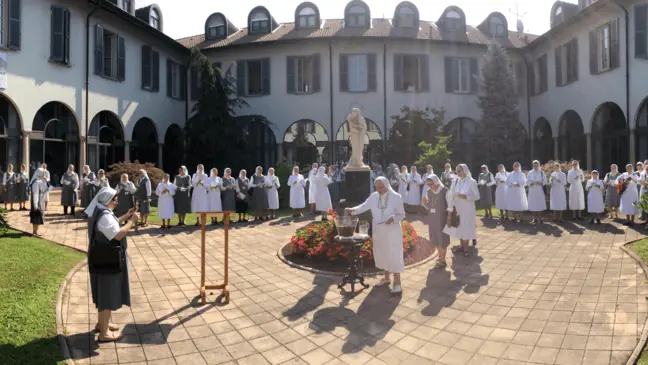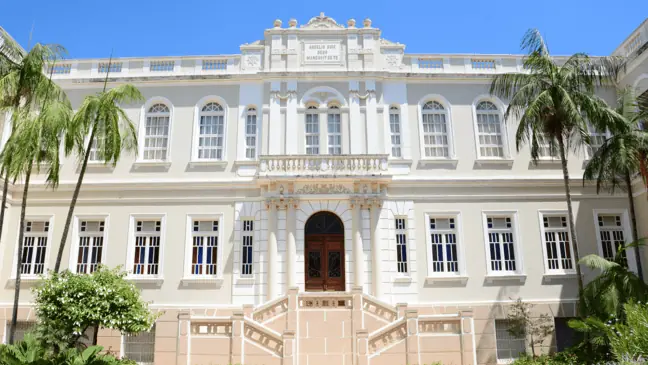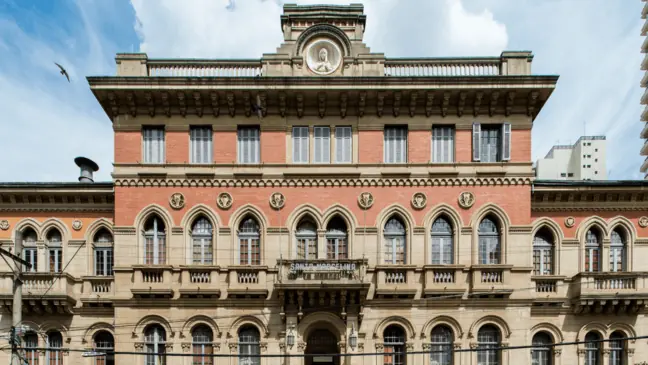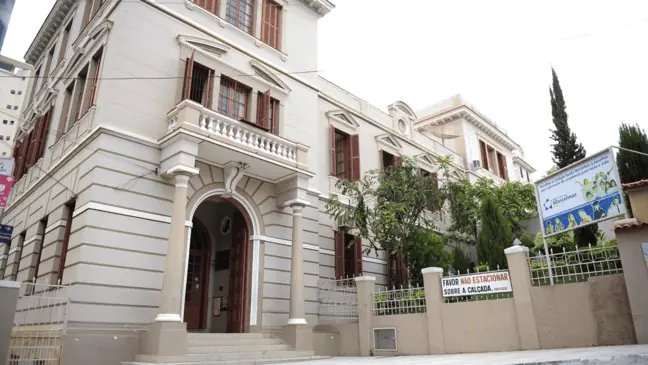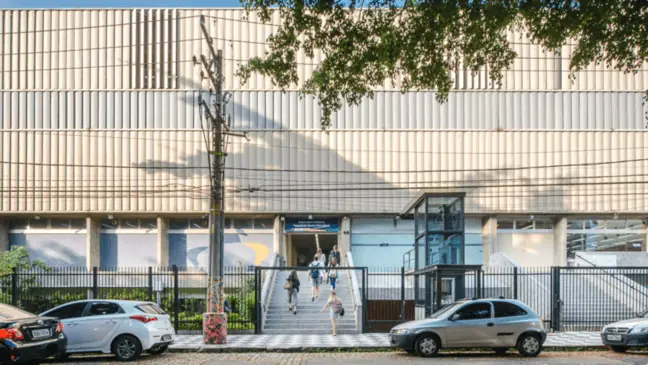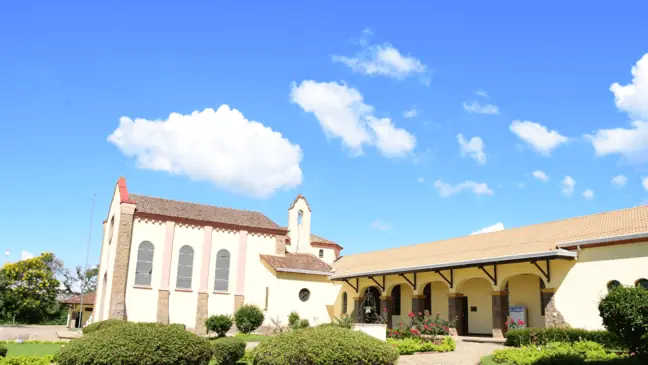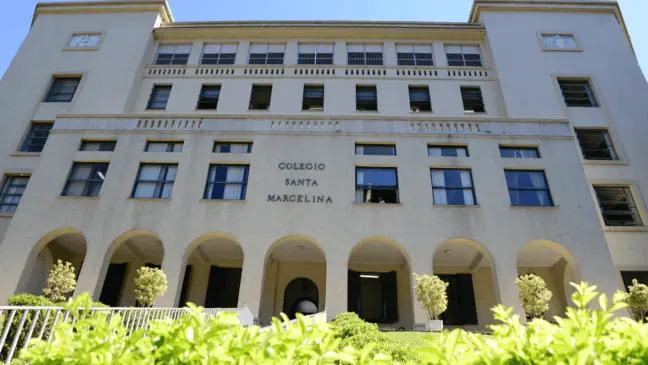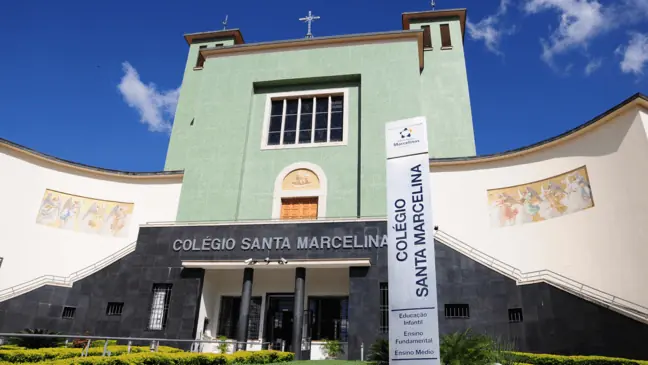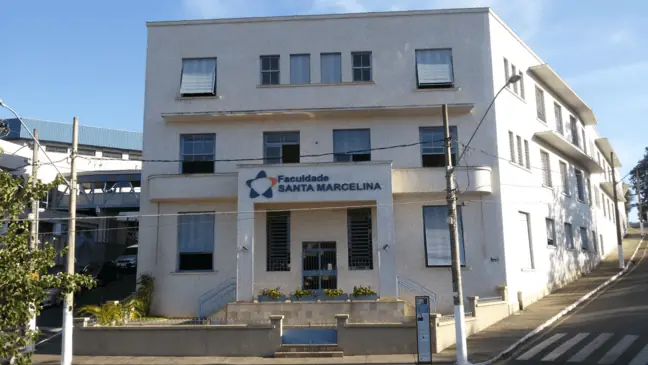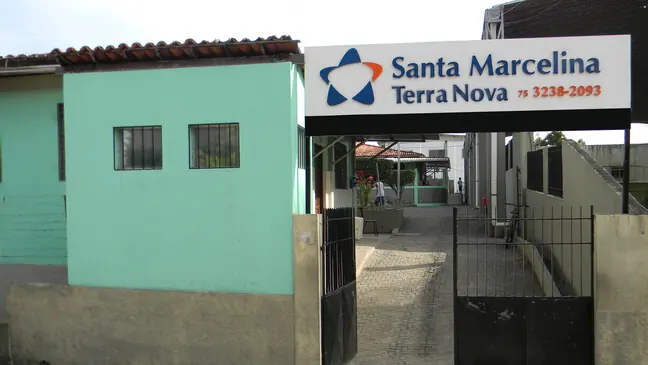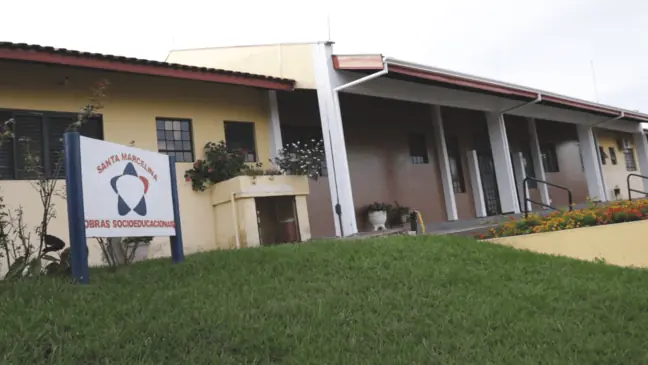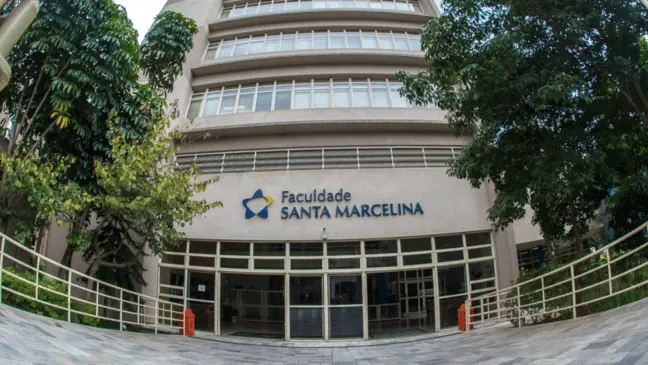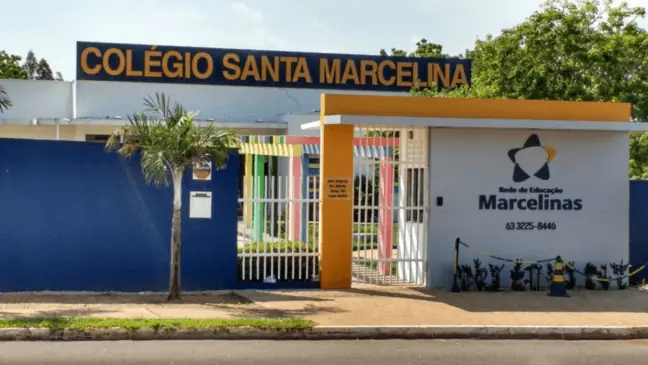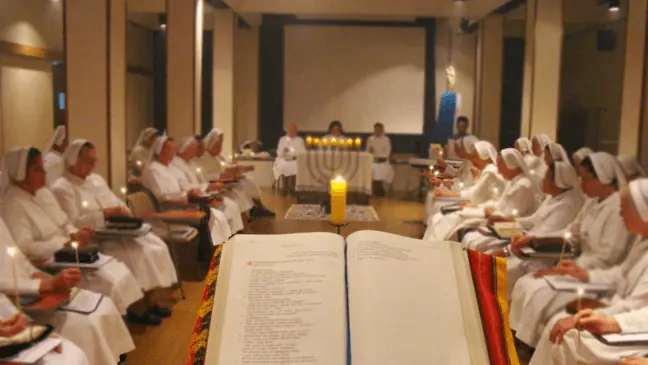THE SCHOOL
AGENDE
SUA VISITA
Aqui, seu filho terá acesso a uma formação completa e integral, que respeita sua vocação, unindo excelência pedagógica com valores humanos. Venha nos conhecer de perto!
VALORES
CAPACITANDO PARA A CIDADANIA
Educamos para a solidariedade, honestidade, justiça e pleno exercício da cidadania. Os valores que embasam as nossas escolhas, decisões e ações:

Carisma

Cuidado

Comunhão

Compromisso

Competência
UM LUGAR DE ENCONTRO E DIÁLOGO
Com inspiração cristocêntrica e mariana, nos firmamos na confiança, na verdade e no respeito mútuo. Nossa missão é transformar a sociedade à luz do Evangelho, tendo a ciência como instrumento e meio para formação do ser humano em sua totalidade.
MISSÃO
NOSSA HISTÓRIA
Desde 1912, quando o Instituto Marcelinas fundou seu primeiro colégio no Brasil, nossa rede de ensino não para de crescer, oferecendo uma educação de excelência conectada aos sinais dos tempos e priorizando a formação integral do estudante fundamentada em valores cristãos. Com uma proposta educacional completa, nossos estudantes enfrentarão com sucesso os desafios do presente e do futuro.
PROTAGONISTAS DA NOSSA HISTÓRIA
- Beato Luigi Biraghi
- Santa Marcelina
- Santo Ambrósio
- São Sátiro
-
Madre Marina
Videmari -
Beata Maria
Anna Sala - Nossa Senhora do Divino Pranto
Born in Vignate, Milan, in 1801, he was an exemplary priest, always faithful to Christ and the Church. Diretor espiritual nos Seminários da Diocese milanesa, instruiu e guiou os jovens que lhe foram confiados, cuidando de suas mentes e corações. Doutor e vice-prefeito da Biblioteca Ambrosiana, dedicou seus estudos a serviço da fé. Foi um grande educador do séc. XIX, incentivou a juventude a abraçar a causa do Evangelho, da Cultura, da Igreja e da Pátria. Biraghi percebeu a demanda da educação feminina da época e buscou transformar a sociedade por meio da educação cristã e acadêmica da mulher, capacitando-a a dar uma resposta adequada às exigências culturais e científicas da modernidade. He died in Milan in 1879. He was beatified on April 30, 2006, in the Duomo of Milan.
Marcelina was born in Rome in the fourth century, around 327, during Constantine the Great’s empire, in a period of great corruption and social inequality. In this devastating scenario, she felt strongly in her heart the sincere desire to consecrate herself to God through a simple life totally dedicated to the poor and suffering.
Certain of her decision, Marcelina, at the age of 25, in the midst of youth, strength and beauty, received from the hands of Pope Liberius, on Christmas Eve of the year 353, the veil of total consecration. Her message was also welcomed by other young women of the nobility who, like her, throughout their lives lived the teachings of the Lord, dedicated to prayer and good works.
In 374, Ambrose was acclaimed by the people as Bishop of Milan, and Marcellina did not hesitate to accompany him to the Milanese seat, strengthening him in his struggle for justice and faith. Marcellina died in 397, at the age of 70, a few months after her brother Ambrose. She was buried in Milan, acclaimed by the people as a saint, in the Basilica of St. Ambrose.
Ambrose, the younger brother of Marcelina and Satyrus, was born in 340, was governor of the northern provinces of Italy and unexpectedly acclaimed Bishop of Milan in 374. He was recognized as a man of deep faith and a solid cultural and religious formation, and became an example of a bishop, pastor and lycurgist. Throughout his life he dedicated himself to the education of the Christian faith, through the experience of the mystery of Christ, celebrated in the liturgy.
Recognized by the Western Church as an important spiritual guide, he knew how to, in an exquisite way, also transmit the richness of the Eastern tradition, influencing the entire Latin world. In a time of great difficulties and transformations, his liturgical flexibility made him a symbol of freedom and pacification.
His works and commentaries on the Scriptures and ascetic-moral treatises became memorable documents of the art of teaching and governing. He was considered the father of the Ambrosian liturgy. He died in 397 and his body is in the Basilica of St. Ambrose in Milan.
He was born in Treves in 337. Sob os cuidados de Marcelina, sua irmã mais velha, terminou os estudos literários e jurídicos e inscreveu-se para ser um advogado curial, já demonstrando sinais incontestáveis de sua dedication and compassion to his neighbor, which would later become his legacy.. He began to wander through the provinces of the Roman Empire until his brother Ambrose was consecrated bishop, calling him to Milan, along with Marcellina, to help him in this important mission. Satyrus renounced his career and made himself available, becoming a wise and charitable administrator of the ecclesiastical goods, always dedicated to helping those most in need.
Returning from a risky voyage to Africa, he was shipwrecked and forced to stop in Rome, seriously ill. During his return trip, he received baptism and the Eucharist and, wishing to be reunited with his brothers, he returned to Milan, where he died in 379, assisted by Marcellina and Ambrose.
She was born in Milan in 1812 and since she was young she thought of consecrating herself entirely to God. Ardent and generous in her search for God’s will, she said yes to the proposal of Monsignor Luigi Biraghi, “willing to do anything, with the grace of the Lord”who wanted her as a collaborator in his demanding apostolic project of founding the Marcellines.
Mother Marina Videmari, driven by the charity of Christ, was a tireless animator of the Sisters and pupils in the various Colleges in Italy and France. Tender and strong, firm and kind, deeply pious, she knew how to give the Marcellines a style of simplicity and family, with an unmistakable characteristic of serene solidity. “Courage” was her last word. She died in Milan in 1891.
Maria Anna Sala was one of the first students at the newly founded school of the Marcelline Sisters in Vimercate in 1848. Welcomed by Mother Marina Videmari, she quickly understood that her ideal and her mission should be the formation of young girls in the school and in the family.
Sister Maria Anna was sanctified by her total fidelity to the charism of the Congregation she had chosen to live, standing out by her exemplary life and dedication to studies. Three great lessons flow from her life, lived by all in the congregation: the need for the formation of a good character, firm, sensitive and balanced; the sanctifying value of the commitment to the duty designated by obedience; and the essential importance of the educational mission.
Her pedagogy, inspired by the spiritual direction of Blessed Biraghi, is summed up in being with the girls in every moment and circumstance, participating in their daily life, in the classroom, in the chapel, in the dining hall, in the playground, and even in the dormitory. Maria Anna Sala was born in 1829 and died in 1891.
Our Lady appeared to Sister Elisabetta Redaelli, a Marcellin nun, in Cernusco, near Milan, where the young sister was very weak and prostrated by terrible pain. On the evening of January 6, 1924, the sister was visited by a beautiful lady who promised to return, saying: “Pray, trust and wait. I will return “.
Weeks passed. It was February 22, and everyone was already expecting her death, when Sister Elisabetta was again visited by the beautiful lady Only at this moment did she recognize that it was the Virgin Mary with the Child Jesus crying in her arms. Our Lady then left a mission to Sister Elisabetta, miraculously healed that night: “You must announce this message to everyone: Jesus weeps because he is not sufficiently loved, sought and desired, also by the people who are consecrated to him”.
Born in Vignate, Milan, in 1801, he was an exemplary priest, always faithful to Christ and the Church. Diretor espiritual nos Seminários da Diocese milanesa, instruiu e guiou os jovens que lhe foram confiados, cuidando de suas mentes e corações. Doutor e vice-prefeito da Biblioteca Ambrosiana, dedicou seus estudos a serviço da fé. Foi um grande educador do séc. XIX, incentivou a juventude a abraçar a causa do Evangelho, da Cultura, da Igreja e da Pátria. Biraghi percebeu a demanda da educação feminina da época e buscou transformar a sociedade por meio da educação cristã e acadêmica da mulher, capacitando-a a dar uma resposta adequada às exigências culturais e científicas da modernidade. He died in Milan in 1879. He was beatified on April 30, 2006, in the Duomo of Milan.
Marcelina was born in Rome in the fourth century, around 327, during Constantine the Great’s empire, in a period of great corruption and social inequality. In this devastating scenario, she felt strongly in her heart the sincere desire to consecrate herself to God through a simple life totally dedicated to the poor and suffering.
Certain of her decision, Marcelina, at the age of 25, in the midst of youth, strength and beauty, received from the hands of Pope Liberius, on Christmas Eve of the year 353, the veil of total consecration. Her message was also welcomed by other young women of the nobility who, like her, throughout their lives lived the teachings of the Lord, dedicated to prayer and good works.
In 374, Ambrose was acclaimed by the people as Bishop of Milan, and Marcellina did not hesitate to accompany him to the Milanese seat, strengthening him in his struggle for justice and faith. Marcellina died in 397, at the age of 70, a few months after her brother Ambrose. She was buried in Milan, acclaimed by the people as a saint, in the Basilica of St. Ambrose.
Ambrose, the younger brother of Marcelina and Satyrus, was born in 340, was governor of the northern provinces of Italy and unexpectedly acclaimed Bishop of Milan in 374. He was recognized as a man of deep faith and a solid cultural and religious formation, and became an example of a bishop, pastor and lycurgist. Throughout his life he dedicated himself to the education of the Christian faith, through the experience of the mystery of Christ, celebrated in the liturgy.
Recognized by the Western Church as an important spiritual guide, he knew how to, in an exquisite way, also transmit the richness of the Eastern tradition, influencing the entire Latin world. In a time of great difficulties and transformations, his liturgical flexibility made him a symbol of freedom and pacification.
His works and commentaries on the Scriptures and ascetic-moral treatises became memorable documents of the art of teaching and governing. He was considered the father of the Ambrosian liturgy. He died in 397 and his body is in the Basilica of St. Ambrose in Milan.
He was born in Treves in 337. Sob os cuidados de Marcelina, sua irmã mais velha, terminou os estudos literários e jurídicos e inscreveu-se para ser um advogado curial, já demonstrando sinais incontestáveis de sua dedication and compassion to his neighbor, which would later become his legacy.. He began to wander through the provinces of the Roman Empire until his brother Ambrose was consecrated bishop, calling him to Milan, along with Marcellina, to help him in this important mission. Satyrus renounced his career and made himself available, becoming a wise and charitable administrator of the ecclesiastical goods, always dedicated to helping those most in need.
Returning from a risky voyage to Africa, he was shipwrecked and forced to stop in Rome, seriously ill. During his return trip, he received baptism and the Eucharist and, wishing to be reunited with his brothers, he returned to Milan, where he died in 379, assisted by Marcellina and Ambrose.
Videmari
She was born in Milan in 1812 and since she was young she thought of consecrating herself entirely to God. Ardent and generous in her search for God’s will, she said yes to the proposal of Monsignor Luigi Biraghi, “willing to do anything, with the grace of the Lord”who wanted her as a collaborator in his demanding apostolic project of founding the Marcellines.
Mother Marina Videmari, driven by the charity of Christ, was a tireless animator of the Sisters and pupils in the various Colleges in Italy and France. Tender and strong, firm and kind, deeply pious, she knew how to give the Marcellines a style of simplicity and family, with an unmistakable characteristic of serene solidity. “Courage” was her last word. She died in Milan in 1891.
Anna Sala
Maria Anna Sala was one of the first students at the newly founded school of the Marcelline Sisters in Vimercate in 1848. Welcomed by Mother Marina Videmari, she quickly understood that her ideal and her mission should be the formation of young girls in the school and in the family.
Sister Maria Anna was sanctified by her total fidelity to the charism of the Congregation she had chosen to live, standing out by her exemplary life and dedication to studies. Three great lessons flow from her life, lived by all in the congregation: the need for the formation of a good character, firm, sensitive and balanced; the sanctifying value of the commitment to the duty designated by obedience; and the essential importance of the educational mission.
Her pedagogy, inspired by the spiritual direction of Blessed Biraghi, is summed up in being with the girls in every moment and circumstance, participating in their daily life, in the classroom, in the chapel, in the dining hall, in the playground, and even in the dormitory. Maria Anna Sala was born in 1829 and died in 1891.
Divino Pranto
Our Lady appeared to Sister Elisabetta Redaelli, a Marcellin nun, in Cernusco, near Milan, where the young sister was very weak and prostrated by terrible pain. On the evening of January 6, 1924, the sister was visited by a beautiful lady who promised to return, saying: “Pray, trust and wait. I will return “.
Weeks passed. It was February 22, and everyone was already expecting her death, when Sister Elisabetta was again visited by the beautiful lady Only at this moment did she recognize that it was the Virgin Mary with the Child Jesus crying in her arms. Our Lady then left a mission to Sister Elisabetta, miraculously healed that night: “You must announce this message to everyone: Jesus weeps because he is not sufficiently loved, sought and desired, also by the people who are consecrated to him”.


